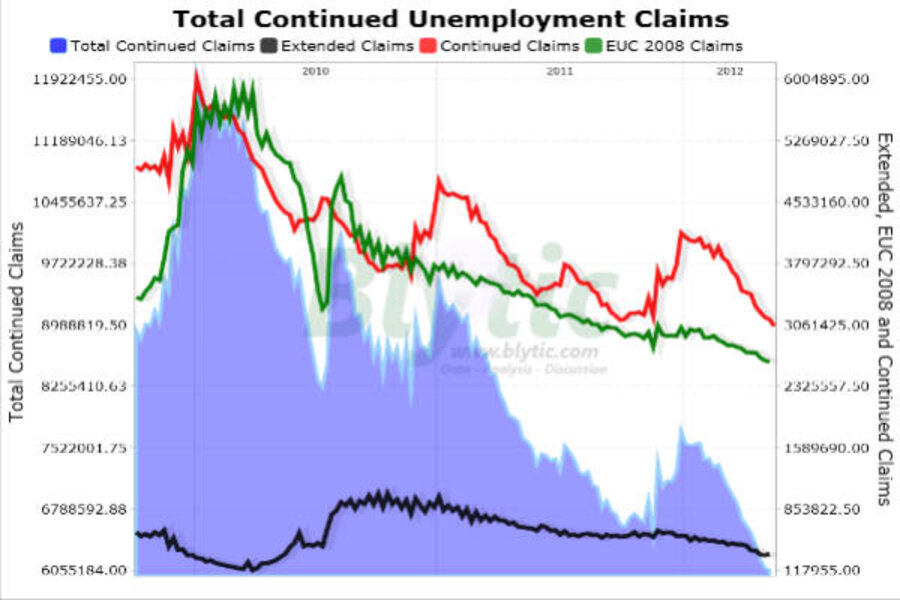Newest jobless numbers show increase in initial claims
Loading...
Today’s jobless claims report showed a notable increase to initial unemployment claims and a decline to continued unemployment claims while seasonally adjusted initial claims approached the closely watched 400K level.
Seasonally adjusted “initial” declined to 383,000 claims from last week’s revised 373,000 claims while seasonally adjusted “continued” claims declined by 36,000 resulting in an “insured” unemployment rate of 2.6%.
Since the middle of 2008 though, two federal government sponsored “extended” unemployment benefit programs (the “extended benefits” and “EUC 2008” from recent legislation) have been picking up claimants that have fallen off of the traditional unemployment benefits rolls.
Currently there are some 2.93 million people receiving federal “extended” unemployment benefits.
Taken together with the latest 3.12 million people that are currently counted as receiving traditional continued unemployment benefits, there are 6.05 million people on state and federal unemployment rolls.





